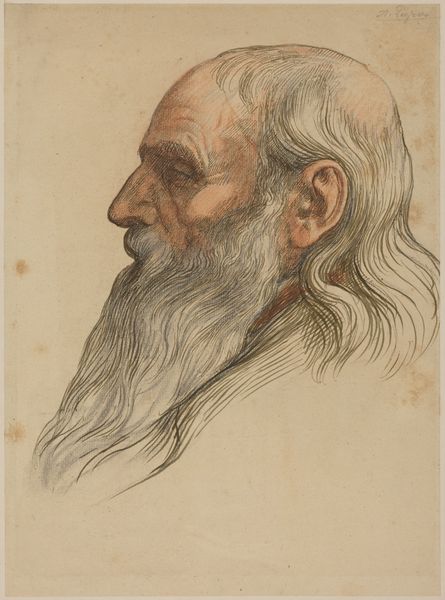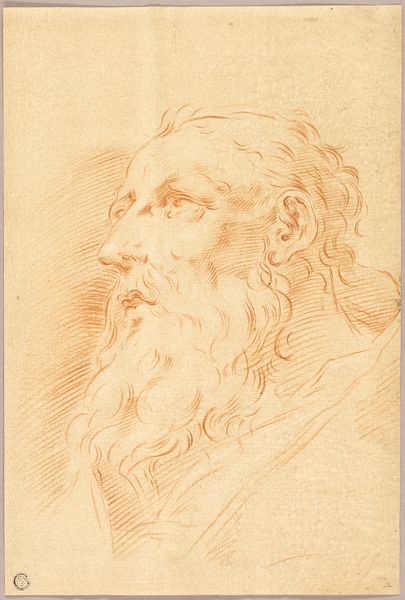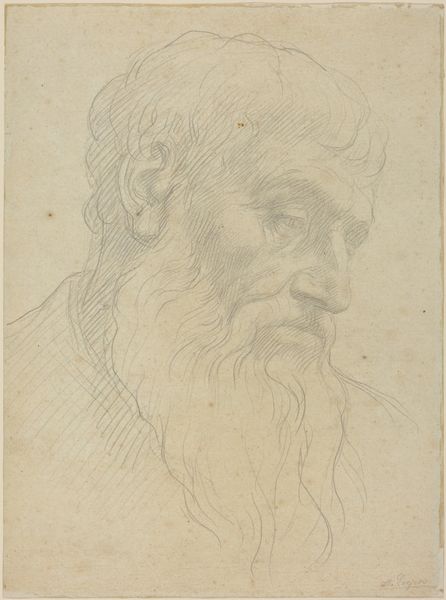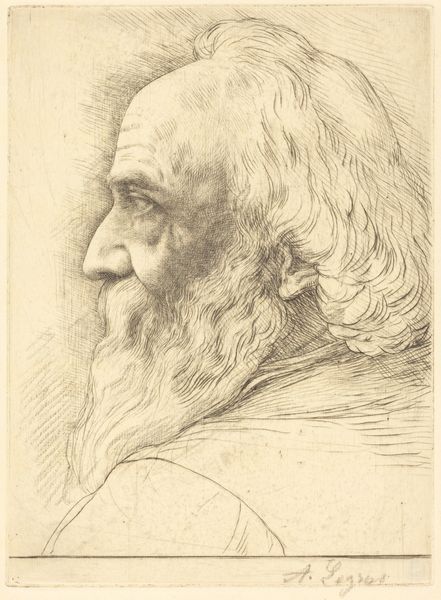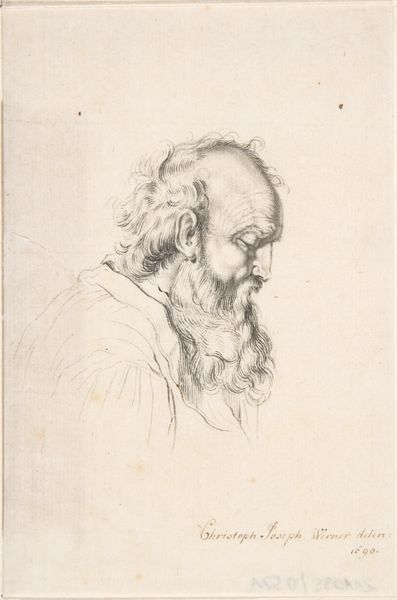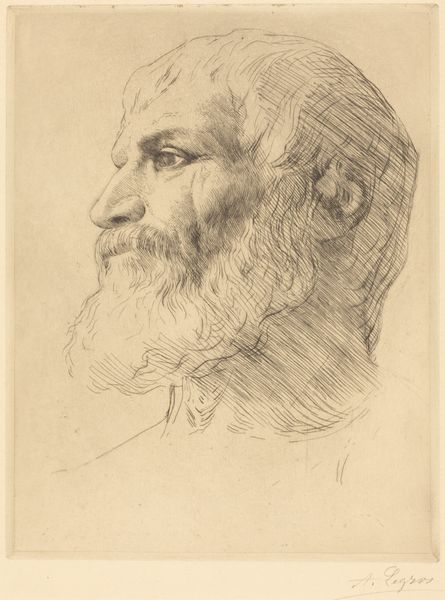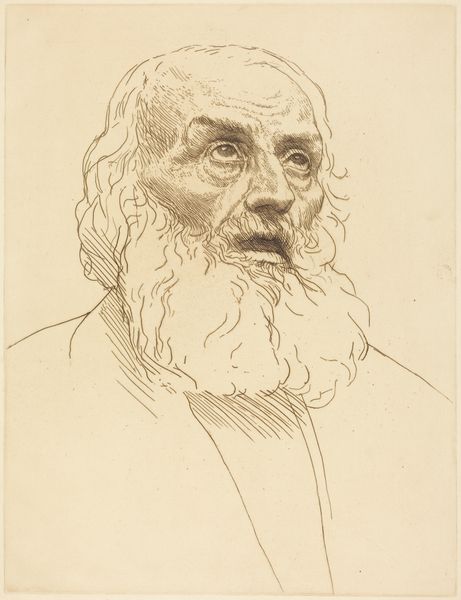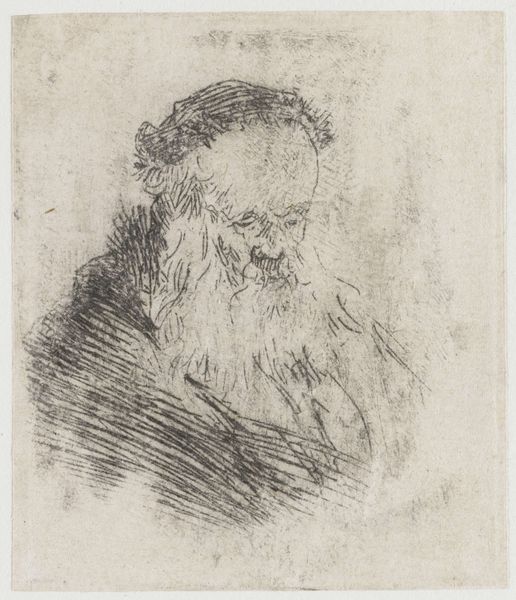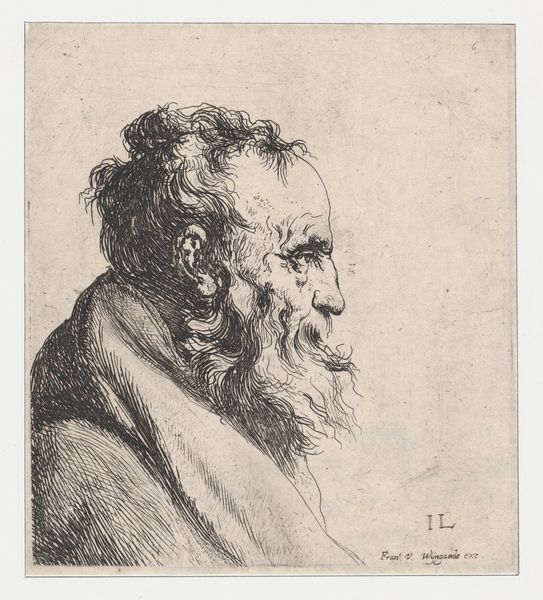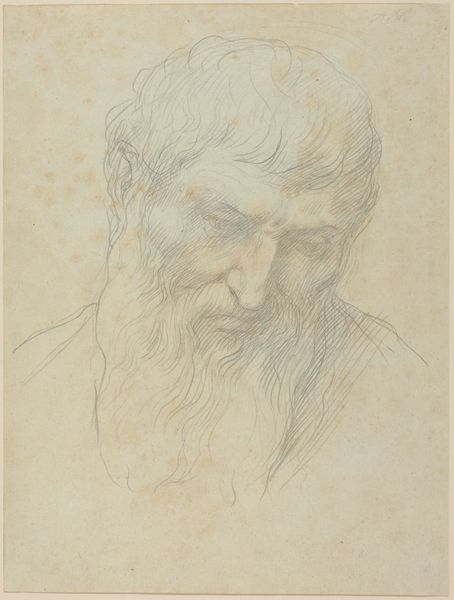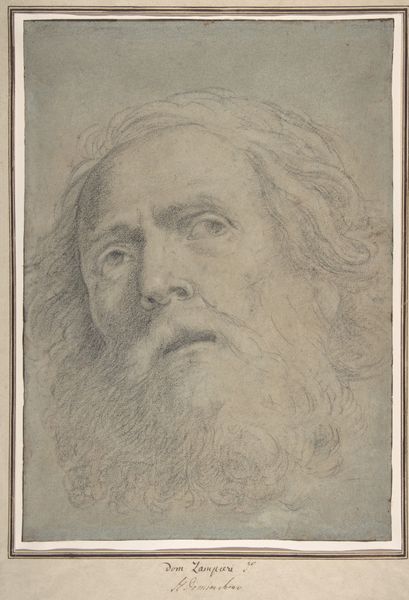
drawing, pencil, charcoal
#
portrait
#
drawing
#
baroque
#
figuration
#
pencil
#
charcoal
#
academic-art
Dimensions: 13 5/16 x 11 1/16 in. (33.8 x 28.1 cm)
Copyright: Public Domain
Curator: Jean Restout the Younger created this drawing, "Head of a Bearded Man," sometime between 1745 and 1755. It is now held at The Metropolitan Museum of Art. Editor: It strikes me immediately how somber and perhaps contemplative this figure appears. The artist really captured a sense of introspective melancholy, all rendered in charcoal and pencil. There is a deliberate, but incomplete feeling here. Curator: Indeed. Restout was a product of the French Royal Academy, and portraits of this type often served an important function in that world. Artists would draw the faces and poses of notable citizens, politicians and others that could offer advantages within that society. He gained considerable attention for his ability to work within its formal conventions while simultaneously creating his own Baroque flair. Editor: Look at the layering and directionality of the strokes! Restout uses visible hatching and cross-hatching in varying tones to sculpt the planes of the man's face. It's this raw materiality, the pure application of line, that is so appealing here. Curator: I'm more drawn to considering its social function, what it meant for an artist to depict and display men of prominence. The very act was an affirmation of societal structure, reinforcing hierarchies of status and influence, and artistic excellence. Editor: I see that context, but I can't help but also look closely at the cascade of the beard itself and think of how Restout guided the viewers eyes towards a softened neck—so full of visual tactility and grace. There are no heavy lines and that bare, quiet space lets the eye breathe. Curator: Absolutely, the bare spaces have as much, or maybe more importance when considering social relevance. These ‘absences’ could symbolize a sort of humility, almost acknowledging the man’s earthly flaws in relation to God. Editor: Ultimately, Restout's combination of the tangible and the conceptual invites diverse interpretations, offering us insight both into 18th century artistic values, and the deeper meaning imbued within this academic study. Curator: A wonderful balance, that showcases the complex world surrounding the artistic output. We shouldn't neglect art's historical purpose.
Comments
No comments
Be the first to comment and join the conversation on the ultimate creative platform.
